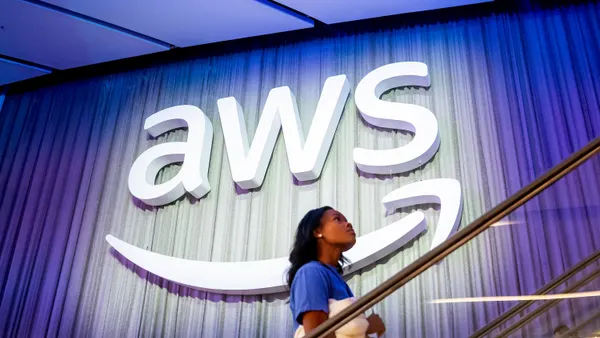Dive Brief:
- Zoom is adding a slew of updated capabilities to its Zoom Rooms platform — the company's blend of in-room and virtual videoconferencing capabilities — in a push to support a hybrid work model, the company announced Wednesday. The features are geared at encouraging a contactless work experience and flexibility for "anywhere" work.
- Zoom now gives users access to additional room controls by pairing a Zoom Room with their mobile device, "including the ability to start or join a meeting and full audio, video, and participant controls." A virtual receptionist/kiosk mode sets up a contactless entry experience for meeting guests. Visitors can connect with a receptionist through a Zoom Rooms for Touch device.
- The set of upgrades to Zoom Rooms speaks to plans organizations are leading to return to the office, said Jeff Smith, head of Zoom Rooms. The theme is safety and ease of use of shared conference room equipment by allowing users to leverage personal devices, minimizing touching shared surfaces in an interface familiar to users, Smith said.
Dive Insight:
As more people are vaccinated — 26.5 million, by the CDC's account — in-person work is staging a comeback.
But a new, unscripted model for hybrid work will need to take shape as employees and businesses ease back into the idea of co-location. As that model comes together, tech tool providers continue to adjust to what users say they may need, competing to make themselves irreplaceable.
Slack, for example, pitched itself as a layer bridging the conversational and operational, when work chatter moved to the digital realm. Salesforce bought Slack, but also launched a back-to-the-office tool set within Work.com.
However, not all organizations are rushing to return to the physical conference room once again. Nine out of 10 human resource leaders say they plan to allow their employees to work remotely at least some of the time even after vaccines roll out, according to a Gartner survey.
"More and more, there will be one or more people in a particular meeting that aren't physically together," said Smith. "The new normal is, predominantly, a hybrid, where we have some people that can be together physically, and some people that can't."
At least two obstacles stand in the way of a smooth transition to a hybrid environment: employee comfort with safety protocols and their technical ability with platforms.
Among employees "there's still a high degree of fear around their safety," said Bhushan Sethi, joint global leader, People and Organization, at PwC. There's also reticence around some of the protocols designed to get people back into the office — just over half of employees are comfortable providing proof of vaccination in order to work on-site, according to PwC data.
Upgrades such as Zoom's reach business users at a time when many are experiencing fatigue around the tools of remote work. Four in 10 employees have found their ability to seamlessly use work-related technology, apps and tools has stayed relatively the same during the pandemic.
"There's a sense of desensitization" to the tools that sustained remote work, said Sethi. "It just highlights that firms are going to have to do more to get their people engaged and productive."














